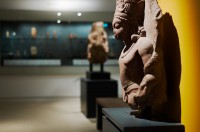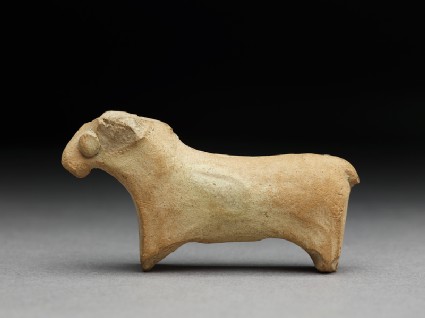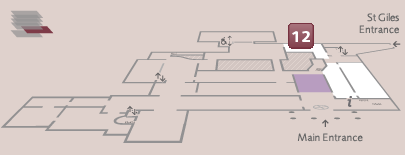Room 12 | India 2500 BC-AD 600 gallery
Explore the early development of Indian art, from the artefacts of the Indus Valley to the Hindu and Buddhist sculpture of north India and Gandhara.

Galleries : 116 objects
- Reference URL
Actions
Terracotta figure of a bull or ox
-
Details
- Associated place
-
Asia › Pakistan › Sindh province › Chanhu-daro (place of creation)
- Date
- 2500 - 2300 BC
- Material and technique
- terracotta
- Dimensions
- 3.5 x 6.5 x 2 cm max. (height x width x depth)
- Material index
- Object type index
- No. of items
- 1
- Credit line
- Purchased, 1941.
- Accession no.
- EACh.4
-
Further reading
Harle, J. C., and Andrew Topsfield, Indian Art in the Ashmolean Museum (Oxford: Ashmolean Museum, 1987), no. 2 on pp. 3-4, illus. p. 4
Ahuja, Naman, ‘Early Indian Art at the Ashmolean Museum - Catalogue in progress’, 2016, no. 14.2
Location
Objects are sometimes moved to a different location. Our object location data is usually updated on a monthly basis. Contact the Jameel Study Centre if you are planning to visit the museum to see a particular object on display, or would like to arrange an appointment to see an object in our reserve collections.
Publications online
-

Indian Art in the Ashmolean Museum
These two toy figures of bulls, crude as they are in comparison to the animals depicted on some of the seals, already show some of the plastic sense as well as the sympathy for animals which have always characterized the Indian modeller and sculptor. Although straight backed cattle were already known in Harappan times, these appear to have been modelled on the typical Indian breed (bos indicus) with its hump, only traces of which remain, however, on these little animals. The larger (left) has a neatly drilled hole through its neck. It was probably one of a pair, and the hole allowed one of the small terracotta bullock carts, many of which have been found at Harappan sites, to be attached; it also suggests that the modeller had oxen in mind. The set of horns on both animals supports this. The smaller (right) has pellet eyes.
Chanhu-daro is an important Harappan site some 75 miles (120 km.) south of Mohenjodaro. According to the excavator, bulls with drilled holes for attaching little carts are not found at the latter site while the front and rear legs joined together, as in the pair illustrated, are only found there at the earlier levels.
Galleries
Notice
Objects may have since been removed or replaced from a gallery. Click into an individual object record to confirm whether or not an object is currently on display. Our object location data is usually updated on a monthly basis, so contact the Jameel Study Centre if you are planning to visit the museum to see a particular Eastern Art object.
© 2013 University of Oxford - Ashmolean Museum








